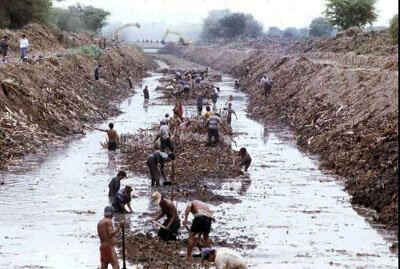Flood monitoring
Flooding is the world's most costly type of natural disaster. Across the developing world floods can strike with deadly regularity, destroying housing, agriculture and communications.
Developed nations are hardly immune: the floods that struck Europe in 2002 cost dozens of lives and billions of Euros.
Future threat increasing
Some 85% of all European civil protection measures are concerned with floods, and the damage done by flooding is set to grow further in future. Extensive building along riverbanks and flood plains leaves more property under threat and climatologists project an increase in extreme weather events including floods.
Well in advance of any flood occurring, satellites can help civil protection planners anticipate where a river would be most prone to burst its banks, and take action accordingly. Satellite data can provide highly detailed digital elevation models of areas at risk that can serve as the basis of computerised flood simulations.
A management tool
During a flood event near-real-time images are a management tool for authorities coping with the disaster. One of the biggest problems is obtaining a clear picture of the overall extent of the flood.

Wide area satellite images can show an entire flood within a single picture, with radar instruments especially well suited for differentiating between waterlogged and dry land. A sequence of satellite images can show if the flood is growing or diminishing over time, and highlight further areas coming under threat of inundation.
Simply comparing before and after images of the flooded region makes possible a rapid and authoritative damage assessment estimate, factoring in different land cover types to quantify the cost of the flood.
Risk mapping
In the aftermath, risk maps can be created that combine a trio of variables – the flood extent, the type of land inundated and the likely flood return period – to guide civil protection officials as well as insurers as to how much money should reasonably be spent to protect or insure areas on the map from future floods.








